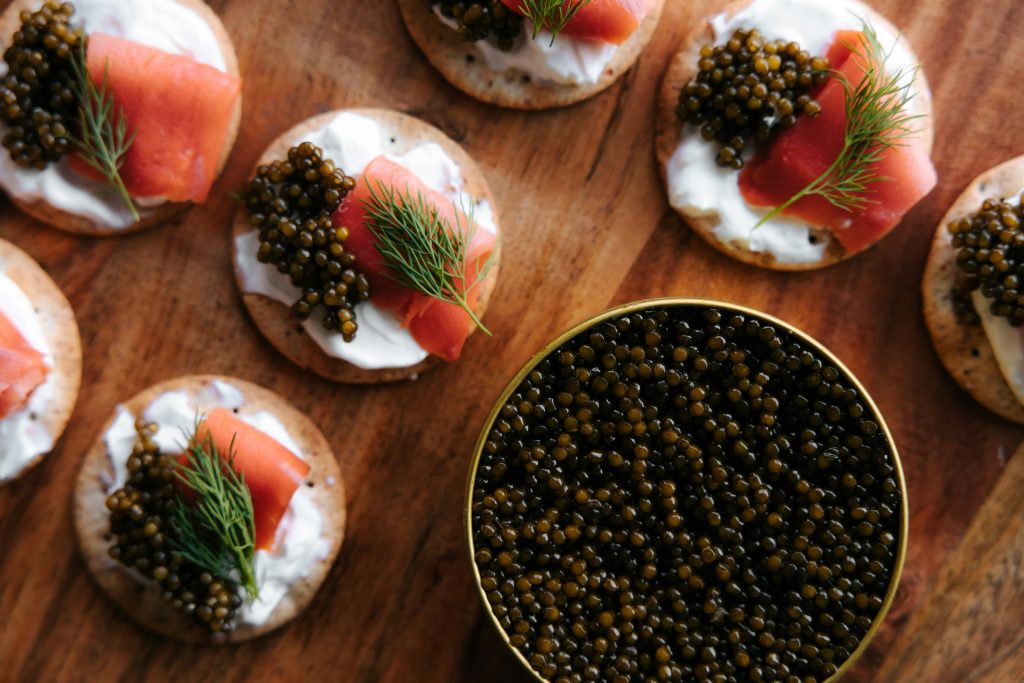
Picture this: a delicate spoonful of shimmering, salty pearls melting on your tongue, transporting you to a world of luxury and indulgence. That’s the magic of caviar, the ultimate symbol of gourmet sophistication. But what makes this prized delicacy so special, and why has it been adored by royalty and gourmands alike for centuries? Join us on a culinary journey as we dive into the rich history and diverse flavours of caviar, uncovering the unique characteristics of seven exquisite types that will tantalise your taste buds and elevate your dining experience.
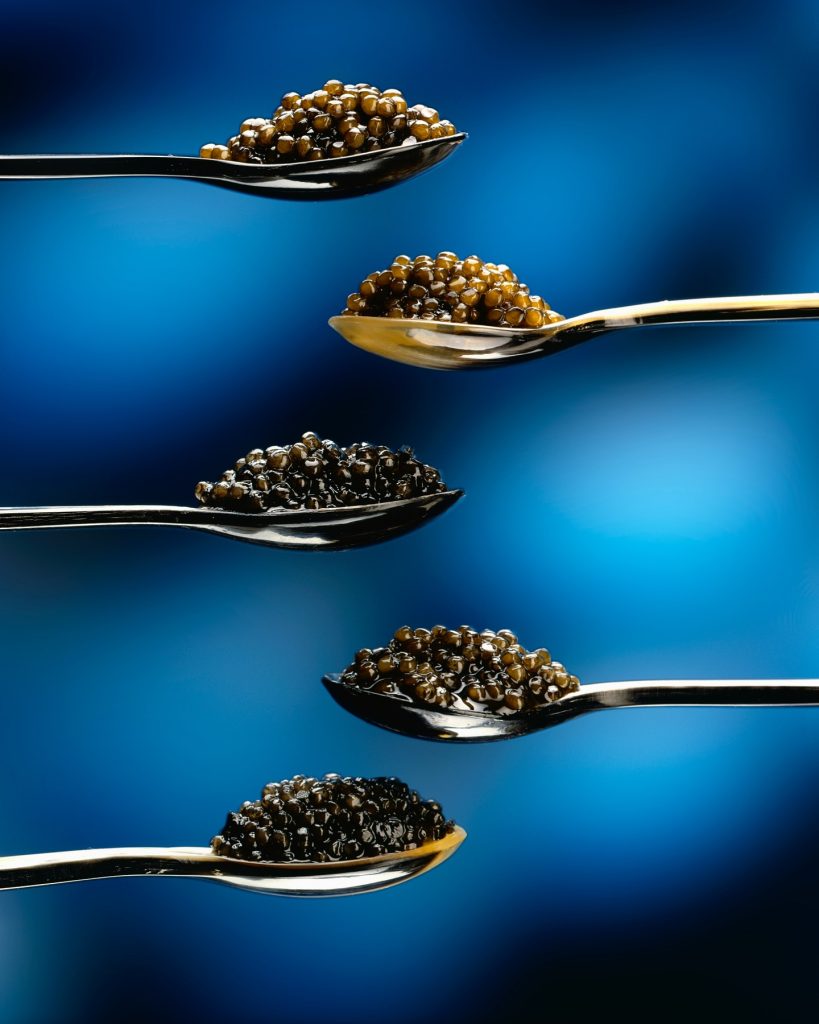
Caviar, that luxurious little indulgence of salt-cured fish eggs, has been gracing tables for centuries. Its origins are as rich as its flavour, tracing back to ancient Persia, where it wasn’t just a tasty treat but also a cure-all of sorts. Over the years, caviar has become the emblem of opulence, often associated with royalty and the elite. The painstaking process of harvesting and the patience required for maturation ensure that only the best make it to the table, maintaining its prestigious status.
“Caviar is like a fine wine, a sophisticated taste that needs to be savoured.”
– Alain Ducasse
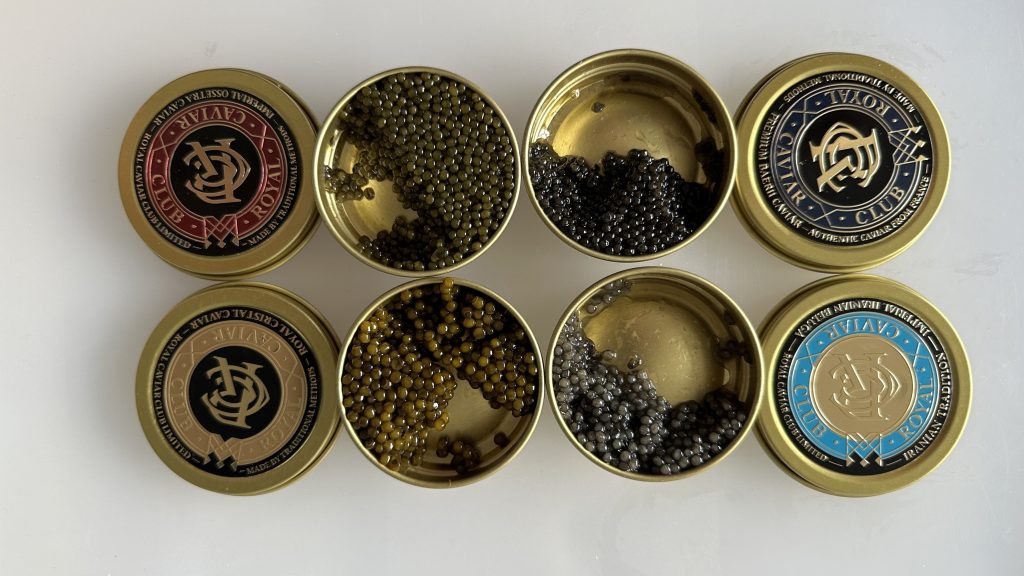
How To Test The Quality Of Caviar
To ensure you’re getting top-quality caviar, start by examining the eggs. High-quality caviar should have a firm, glossy appearance with eggs that are intact and separate easily. The colour should be consistent and vibrant, without any dull or discoloured spots. When you taste it, the eggs should pop gently by pressing the caviar on your tongue towards the roof of your mouth, releasing a fresh, clean, and slightly briny flavour without any off-putting fishy or overly salty taste. The texture should be smooth and creamy, with a satisfying melt-in-your-mouth sensation. Caviar that has a firmer texture probably has a higher borax content, while unpasteurised caviar is softer. Avoid caviar that is mushy, overly salty, or has a strong fishy smell, as these are signs of poor quality or improper handling.

Caviar 101
- Origins: Caviar’s traces to ancient Persia, prized for its rich flavour and medicinal properties.
- Symbol of Luxury: Caviar is an emblem of opulence, associated with royalty and the elite.
- Source: True caviar comes from sturgeon species such as beluga, Ossetra, and Sevruga.
- Labour-Intensive: Harvesting caviar is a meticulous process.
- Maturation Time: Sturgeon take years to mature, with some species needing up to 20 years.
- Egg Sizes: Caviar eggs range from 1.5 to 4 mm, affecting texture and flavour.
- Types: There are numerous types of caviar, each with unique characteristics.
- Colour: Caviar colours range from golden-brown and grey to jet-black.
- Texture: High-quality caviar has a firm, glossy appearance with eggs that burst delicately.
- Traditional Pairings: Classic pairings include blinis, toast points, and crème fraîche.
- Unconventional Pairings: Modern unique pairings include chocolate and tropical fruits.
- Best Season: Optimal time is from late autumn to early spring when the roe is freshest.
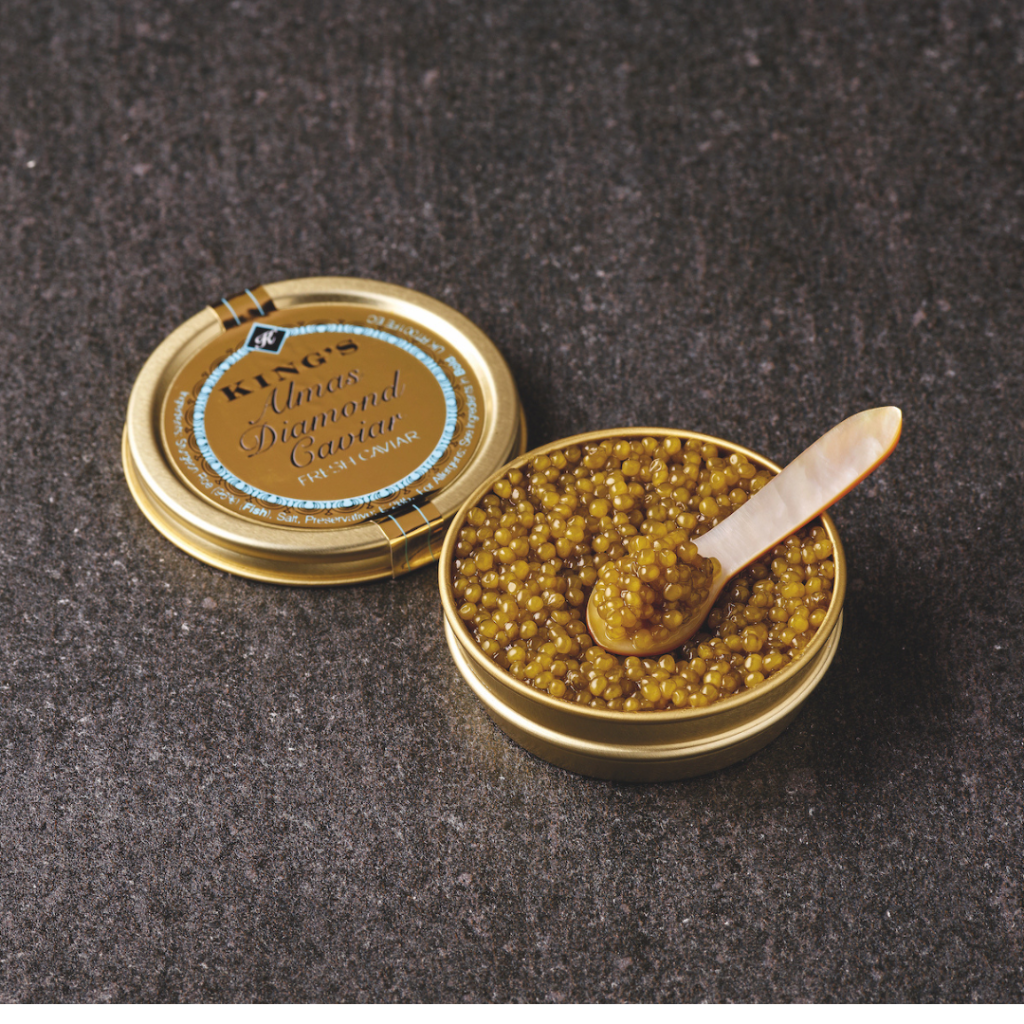
Almas Caviar
(Acipenser ruthenus)
Almas caviar, one of the most luxurious and expensive types of caviar, is harvested from the rare albino sturgeon in Iran. The name “Almas” means “diamond” in Russian, aptly describing its unique and precious nature. This caviar is known for its exceptionally delicate and smooth texture. The sturgeon from which it is harvested can take up to 20 years to mature. Its small, golden eggs are highly prized for their exquisite flavour and rarity.
Egg size: 1 to 2.5 mm.
Egg colour: Light golden to yellow.
Flavour profile: Delicate, smooth, and slightly nutty.
What to look out for: Small, pale golden eggs that are firm and have a subtle, exquisite taste.
Conventional pairing: Blinis with a touch of crème fraîche and a squeeze of lemon.
Unconventional pairing: Champagne jelly, enhancing the luxurious experience.
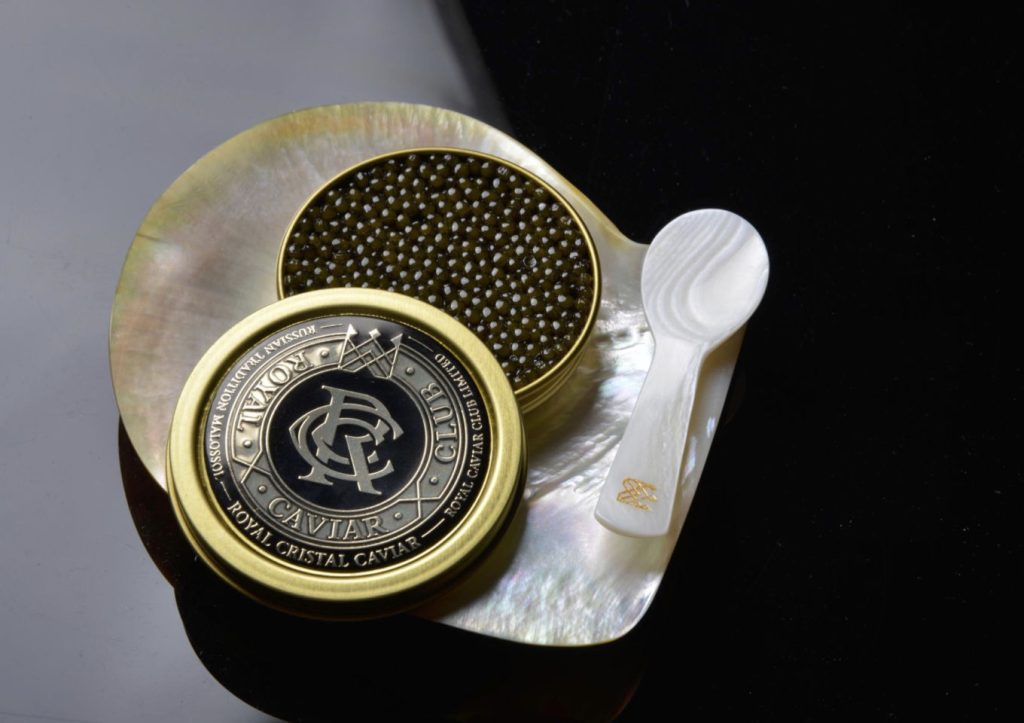
Iranian Beluga Caviar
(Huso huso)
Considered the crème de la crème of caviar, Iranian beluga caviar is harvested from the majestic beluga sturgeon in Iran, which takes about 15 to 20 years to mature. The name “Beluga” derives from the Russian word “belukha,” which means “white” or “pale,” referring to the light colour of the sturgeon’s belly. Its large, delicate eggs, measuring about 3.5 to 4 mm, burst with a buttery, almost ethereal flavour that lingers like a whisper. Imagine biting into a soft cloud of the ocean.
Egg size: 3.5 to 4 mm.
Egg colour: Pale to dark grey.
Flavour profile: Buttery, creamy, and subtly briny.
What to look out for: Large, glossy eggs that pop gently in your mouth, with a clean, fresh taste.
Conventional pairing: Beluga is best enjoyed with lightly buttered toast points.
Unconventional pairing: White chocolate, sending your taste buds on a whimsical adventure.
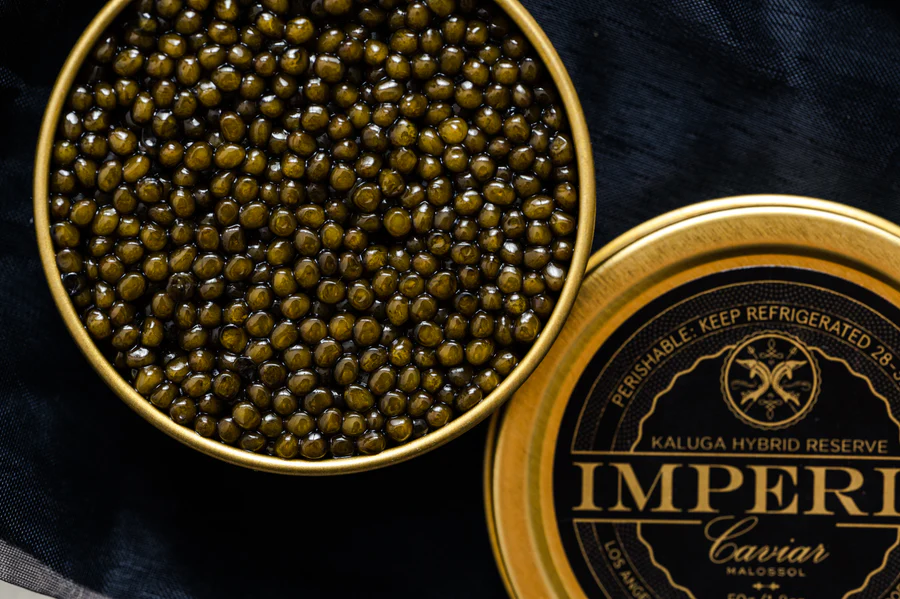
Kaluga Queen Caviar
(Huso dauricus)
Kaluga queen caviar, hailing from the Kaluga sturgeon in China, often draws comparisons to beluga with its large eggs, measuring about 3.5 mm, and buttery finish. A sustainable answer to the Beluga, the name “Kaluga” comes from the Kaluga River region in Russia, where the sturgeon is found. It takes about 10 to 15 years for the Kaluga sturgeon to mature. It brings its own earthy, robust flavour to the table.
Egg size: 3.5 mm.
Egg colour: Dark grey to black.
Flavour profile: Earthy, robust, and buttery.
What to look out for: Large, dark eggs that are firm and offer a rich, earthy flavour.
Conventional pairing: Brioche with unsalted butter.
Unconventional pairing: Avocado toast, a modern twist that complements the smooth texture beautifully.
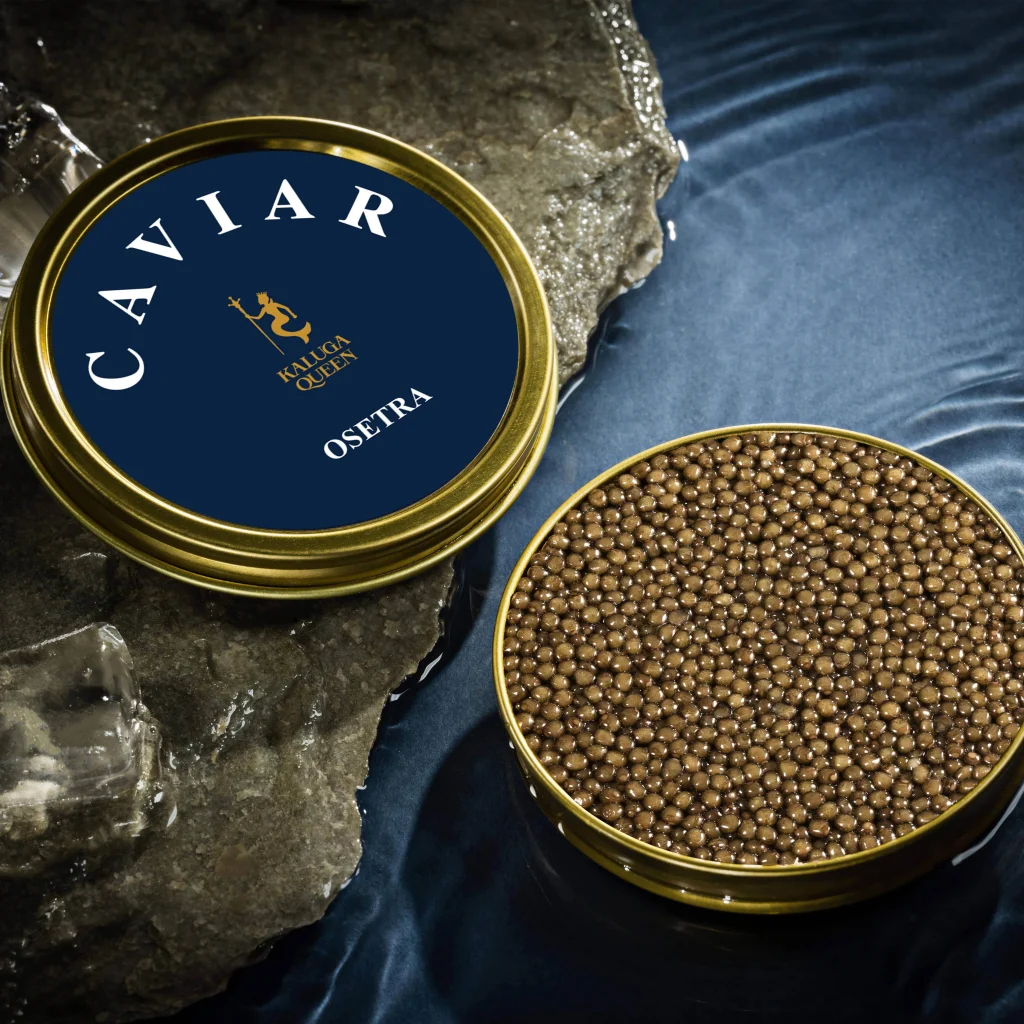
Ossetra Caviar
(Acipenser gueldenstaedtii)
Ossetra caviar, the sophisticated cousin from the Ossetra sturgeon in Russia, takes about 12 to 15 years to mature. The name “Ossetra” comes from the Russian word “osetr,” which means “sturgeon.” It offers a nutty flavour and firm texture with medium-sized eggs around 2 to 3 mm. These golden-brown gems deliver a complex taste profile with subtle hints of seaweed and a whisper of minerals.
Egg size: 2 to 3 mm.
Egg colour: Golden-brown to dark brown.
Flavour profile: Nutty, briny, with hints of seaweed and minerals.
What to look out for: Firm, golden-brown eggs with a slight sheen and a complex, rich flavour.
Conventional pairing: Blinis and a dollop of crème fraîche.
Unconventional pairing: Roasted beets and goat cheese, challenging traditional culinary boundaries.

Sevruga Caviar
(Acipenser stellatus)
Sevruga caviar, with its small, dark grey eggs around 2 mm, packs an intense, briny punch that’s not for the faint of heart. Harvested from the Sevruga sturgeon in the Caspian Sea (spanning Russia and Iran), it matures in about 7 to 10 years, making it a robust choice. The name “Sevruga” comes from the Russian word “sevruga,” meaning “sturgeon.”
Egg size: 2 mm.
Egg colour: Dark grey to black.
Flavour profile: Intense, briny, and robust.
What to look out for: Small, dark eggs that are firm and deliver a strong, briny flavour.
Conventional pairing: Hard-boiled eggs with a dash of lemon juice.
Unconventional pairing: Dark chocolate, providing a bitter counterpoint that highlights Sevruga’s boldness.
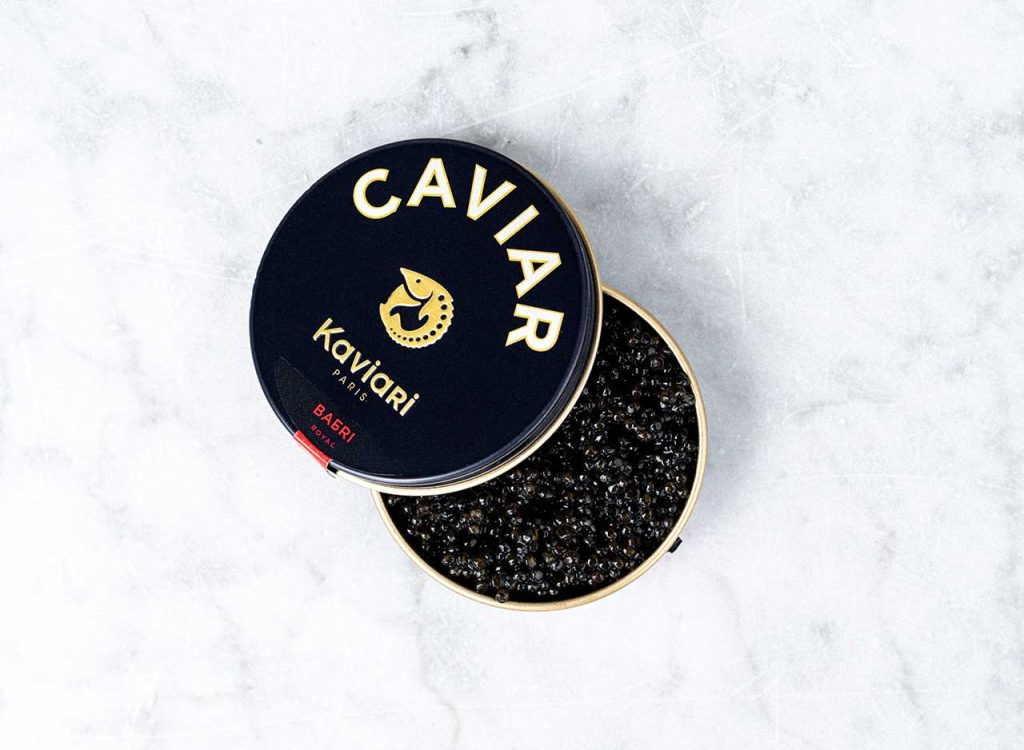
Baeri Caviar
(Acipenser baerii)
Baeri caviar from the Siberian sturgeon in France is the underdog with a clean, briny taste and smaller, more consistent eggs around 2 mm. The name “Baeri” is derived from the scientific name of the Siberian sturgeon, Acipenser baerii. The Siberian sturgeon matures relatively quickly, in about 6 to 8 years. It’s a delight for those who appreciate subtlety.
Egg size: 2 mm.
Egg colour: Dark grey to black.
Flavour profile: Clean, briny, and delicate.
What to look out for: Small, firm eggs with a consistent size and a fresh, oceanic taste.
Conventional pairing: Simple boiled potatoes and a sprinkle of chives.
Unconventional pairing: Sushi, creating a global culinary mash-up.
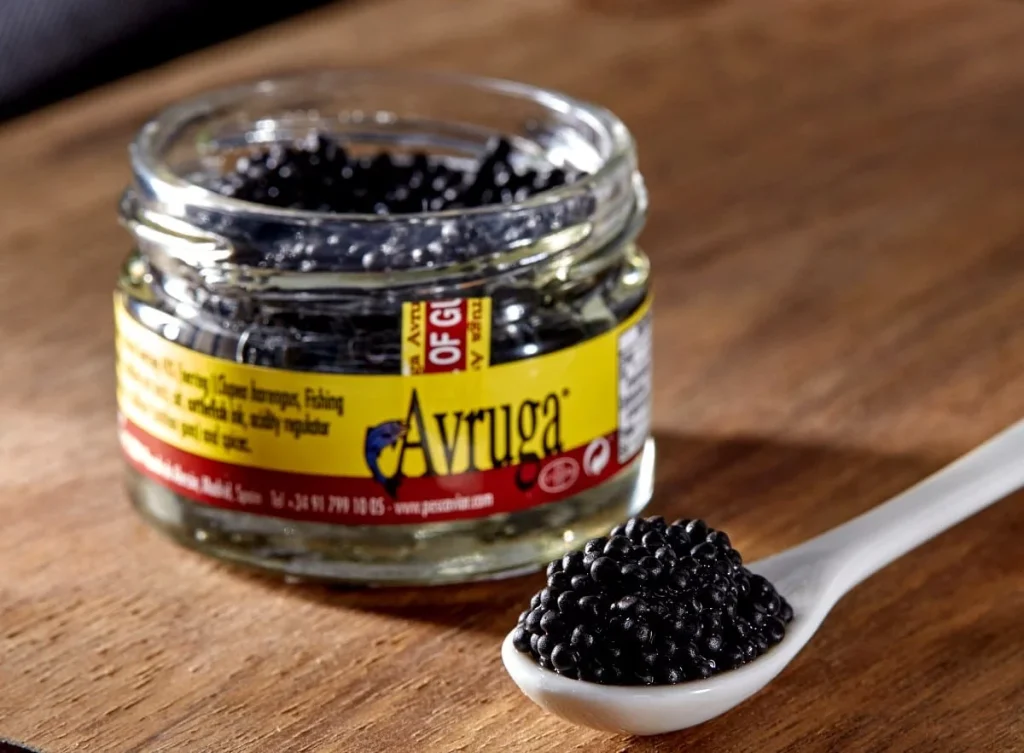
Avruga
(Clupea harengus)
Avruga, while not a true caviar, is made from the eggs of the European herring (Clupea harengus) in Spain and offers an affordable yet flavourful alternative. The name “Avruga” is a brand name, derived from the Spanish word “aviar” meaning “to provide for.” The small, black pearls provide a smoky, slightly salty taste that’s distinctively different from traditional sturgeon caviar.
Egg size: 1.5 to 2 mm.
Egg colour: Black.
Flavour profile: Smoky, slightly salty.
What to look out for: Small, black eggs that are glossy and offer a distinctive smoky taste.
Conventional pairing: Scrambled eggs, creating a deliciously rich breakfast treat.
Unconventional pairing: Crème brûlée, where the sweet and smoky combination is a delightful surprise.
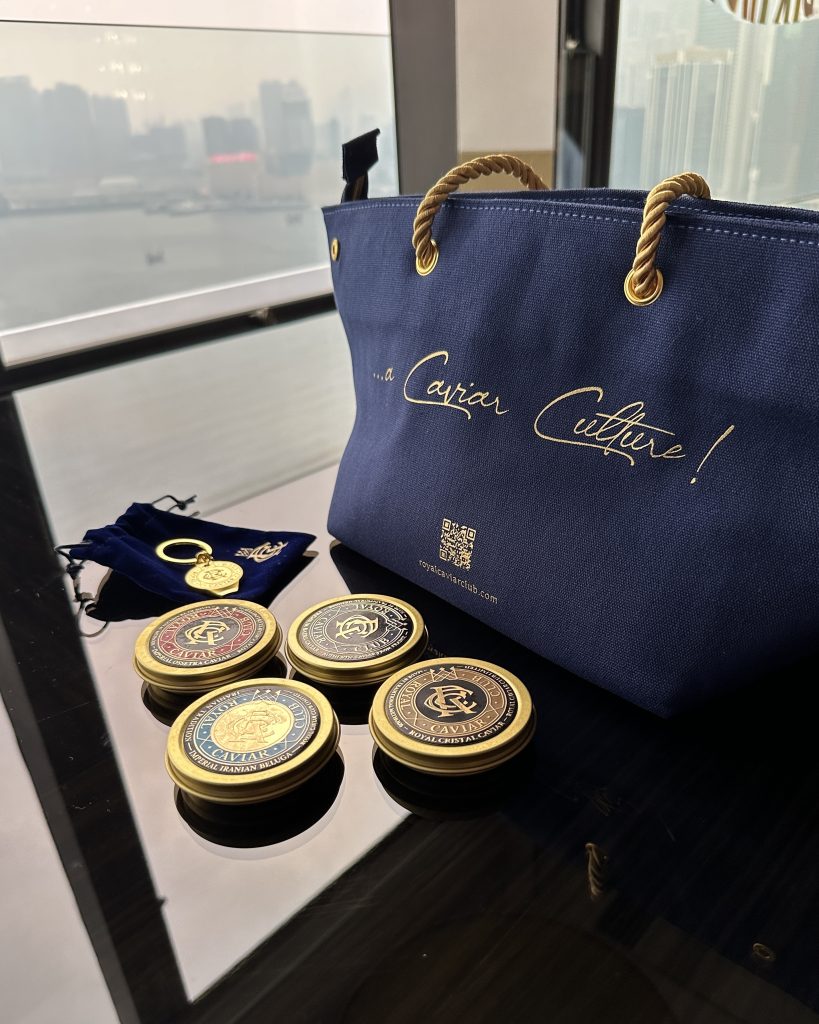
Caviar remains a beacon of gourmet indulgence, transcending its origins to become a global symbol of sophistication and culinary excellence. Whether savoured traditionally or with a modern twist, its allure continues to captivate the taste buds of food enthusiasts worldwide. Enjoy these luxurious bites and remember, sometimes, a little decadence goes a long way.
Did you enjoy reading this? For more, see our Food Guides.